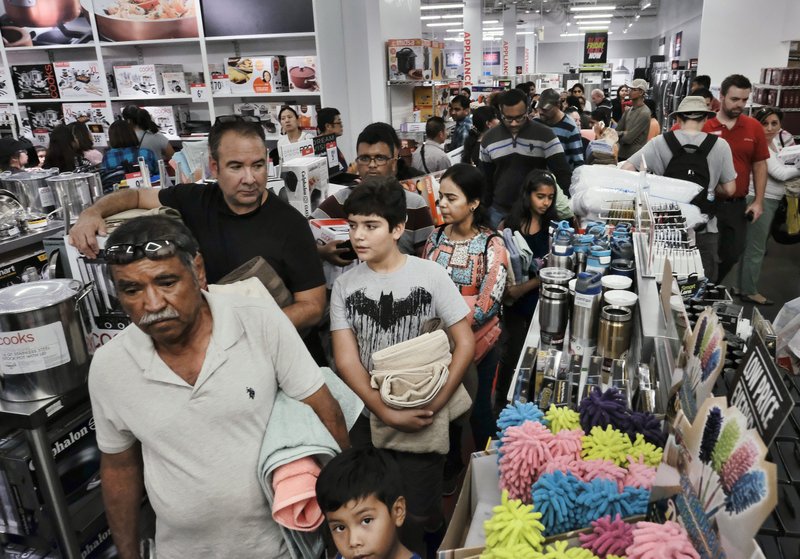WASHINGTON -- Led by a rise in business investment, the U.S. economy grew at an annual pace of 3.3 percent from July through September, its fastest rate in three years.
The Commerce Department estimated Wednesday that third-quarter growth exceeded the 3 percent annual expansion for the period that it had initially reported last month.
The performance, achieved despite damage from two devastating hurricanes, marked the fastest expansion in gross domestic product -- the broadest gauge of economic output -- since a 5.2 percent annual spurt in the third quarter of 2014.
The estimated growth for the July-September quarter marked an improvement on 3.1 annual growth in the second quarter and a 1.2 annual pace in the January-March quarter.
"The news on the economy had previously been good, but it just got a little better," said Jim Baird, chief investment officer at Plante Moran Financial Advisors.
Baird said the Christmas shopping season appears to be off to a strong start, "which bodes well for consumer spending to propel the economy to a strong finish to the year."
Before the revised third-quarter numbers came out, the Federal Reserve Bank of Atlanta was forecasting that growth would rise to a 3.4 percent annual pace in the final three months of 2017, which could bring growth for the full year close to 2.8 percent. In 2016, the economy grew just 1.5 percent.
The economy showed resilience last quarter in the face of two hurricanes: Harvey, which hit Texas in late August, and Irma, which battered Florida in September.
The U.S. economy is benefiting from a pickup in global growth, a healthy job market, which supports consumer spending, and a drop in the value of the dollar against other major currencies, which makes U.S. products less expensive in foreign markets.
Wednesday's revised report said business investment increased at a strong 7.3 percent annual pace from July through September, the sharpest pickup since the end of 2016. In addition to greater spending on transportation equipment, the data also reflected more software spending.
Consumer spending, which accounts for about 70 percent of U.S. economic output, grew at an annual pace of 2.3 percent, down from 3.3 percent in the second quarter.
Government spending and investment rose for the first time in three quarters, led by an uptick in defense spending.
The Federal Reserve's preferred gauge of inflation, which is included in the GDP report, rose at an annual pace of just 1.5 percent, well below the Fed's 2 percent target.
Federal Reserve Chairman Janet Yellen said Wednesday, just before the GDP report, that the expansion is "increasingly broad-based across sectors as well as across much of the global economy."
The Fed is still widely expected to raise interest rates in December for the third time this year.
The central bank's Beige Book economic report, based on anecdotal information collected by the 12 regional Fed banks through Nov. 17, was also released Wednesday. The Fed said business contacts also reported a brightening view as they look ahead.
"There was a slight improvement in the outlook among contacts in reporting districts," the report said.
"Most districts reported employers were having difficulties finding qualified workers across skill levels," the report said. Despite that, "wage growth was modest or moderate in most districts," according to the report, which used similar language in October.
The report did note, however, that "price pressures have strengthened since the last report." Some districts reported higher costs for construction materials.
If inflation increases, that could help resolve the mystery faced by Fed officials as they confront a tightening labor market and sluggish wages and prices. That contradiction has complicated the task of deciding how quickly they should raise interest rates.
U.S. unemployment fell to 4.1 percent in October. Despite that, the Fed's preferred measure of inflation, excluding food and energy components, was just 1.3 percent in the 12 months through September. Inflation has lagged below the Fed's 2 percent target for most of the past five years.
The Commerce Department's third and final estimate of third-quarter GDP will be released Dec. 21.
Information for this article was contributed by Paul Wiseman of The Associated Press; and by Shobhana Chandra and Christopher Condon of Bloomberg News.
A Section on 11/30/2017

